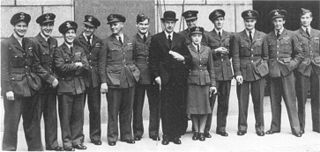 W
WSir John William Maxwell Aitken, 2nd Baronet,, briefly 2nd Baron Beaverbrook in 1964, was a Canadian-British fighter pilot and flying ace of the Second World War, a Conservative politician, and press baron. He was the son of Max Aitken, 1st Baron Beaverbrook.
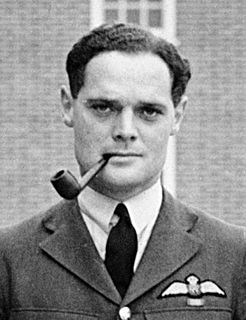 W
WGroup Captain Sir Douglas Robert Steuart Bader, was a Royal Air Force flying ace during the Second World War. He was credited with 22 aerial victories, four shared victories, six probables, one shared probable and 11 enemy aircraft damaged.
 W
WGroup Captain Francis Victor Beamish, was a Royal Air Force fighter pilot and flying ace of the Second World War. After flying during the Battle of Britain he continued to lead fighter operations until he was killed in action in 1942.
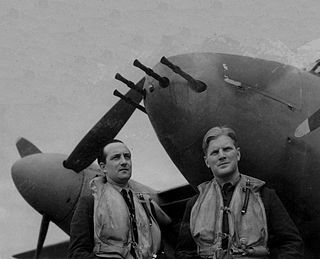 W
WJohn Randall Daniel "Bob" Braham, was a Royal Air Force (RAF) night fighter pilot and fighter ace during the Second World War.
 W
WFrank Reginald "Chota" Carey, was a Royal Air Force (RAF) fighter pilot and flying ace who served during World War II.
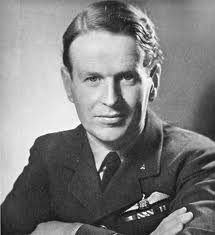 W
WJohn "Cat's Eyes" Cunningham was a Royal Air Force (RAF) night fighter ace during the Second World War and a test pilot. During the war he was nicknamed "Cat's Eyes" by the British press to explain his successes and to avoid communicating the existence of airborne radar to the enemy.
 W
WGroup Captain Billy Drake, was a British fighter pilot and air ace. He was credited officially with 18 enemy aircraft destroyed, two shared, two unconfirmed, four probables, two shared probables and five damaged and one shared damaged with the Royal Air Force during the Second World War. Further revisions to these statistics increased this total to 20 destroyed and seven damaged with a further 13 destroyed and four damaged on the ground.
 W
WGroup Captain Donald "Don" Osborne Finlay, DFC, AFC was a British athlete and Royal Air Force officer.
 W
WGroup Captain Colin Falkland Gray, was a Royal Air Force (RAF) officer and the top New Zealand fighter ace of the Second World War.
 W
WLinton Chorley Hope FRAes was a sailor from Great Britain, who represented his country at the 1900 Summer Olympics in Meulan, France. With Lorne Currie as helmsman and fellow crewmembers John Gretton and Algernon Maudslay, Hope took first places in both the race of the .5 to 1 ton class and the Open class.
 W
WAdolph Gysbert Malan,, better known as Sailor Malan, was a South African fighter pilot and flying ace in the Royal Air Force (RAF) who led No. 74 Squadron RAF during the Battle of Britain. He finished his fighter career in 1941 with 27 destroyed, 7 shared destroyed and 2 unconfirmed, 3 probables and 16 damaged. At the time he was the RAF's leading ace, and one of the highest scoring pilots to have served wholly with Fighter Command during the Second World War.
 W
WGroup Captain Robert Wardlow "Bobby" Oxspring, was a Royal Air Force officer and flying ace of the Second World War.
 W
WGroup Captain George Nigel "Geordie" Douglas-Hamilton, 10th Earl of Selkirk, was a Scottish nobleman and Conservative politician.
 W
WGroup Captain James Martin Stagg, was a Met Office meteorologist attached to the Royal Air Force during Second World War who notably persuaded General Dwight D. Eisenhower to change the date of the Allied invasion of Europe from 5 to 6 June 1944.
 W
WGroup Captain Peter Wooldridge Townsend was a Royal Air Force officer, flying ace, courtier and author. He was equerry to King George VI from 1944 to 1952 and held the same position for Queen Elizabeth II from 1952 to 1953. Townsend notably had a romance with Princess Margaret, the Queen's only sibling.
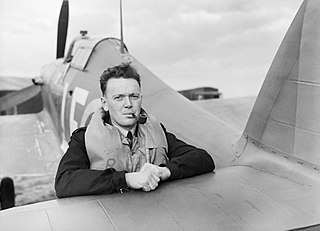 W
WPercival Stanley "Stan" Turner, served with the Royal Air Force and the Royal Canadian Air Force during the Second World War. He holds the record of the most combat hours flown of any Canadian pilot.
 W
WGroup Captain Allan Richard Wright, was a Royal Air Force (RAF) fighter pilot and flying ace of the Second World War. Wright scored 11 kills, three shared kills, five probable kills and seven damaged against the German Luftwaffe, and was one of the last surviving airmen called The Few who served in the Battle of Britain.